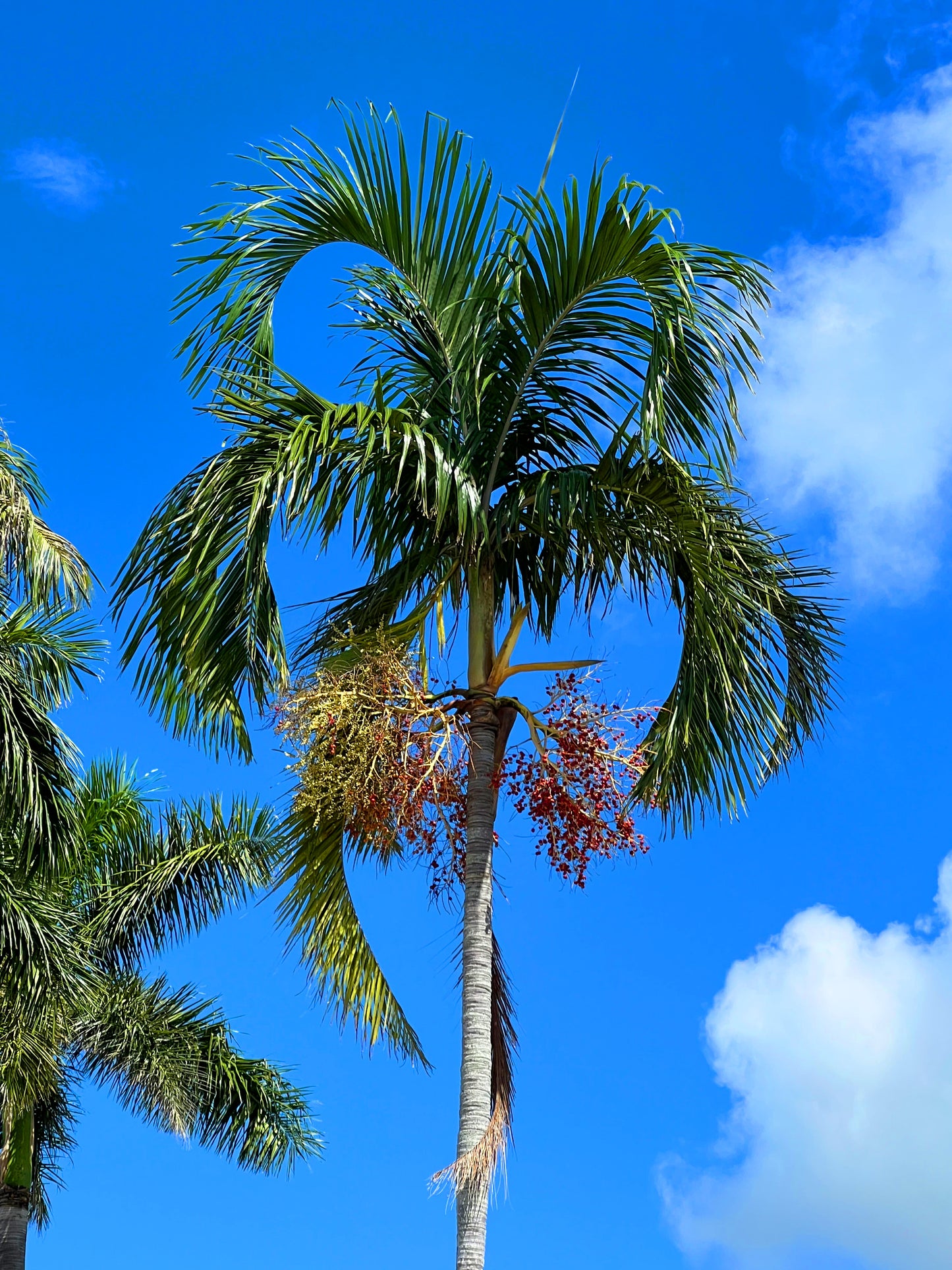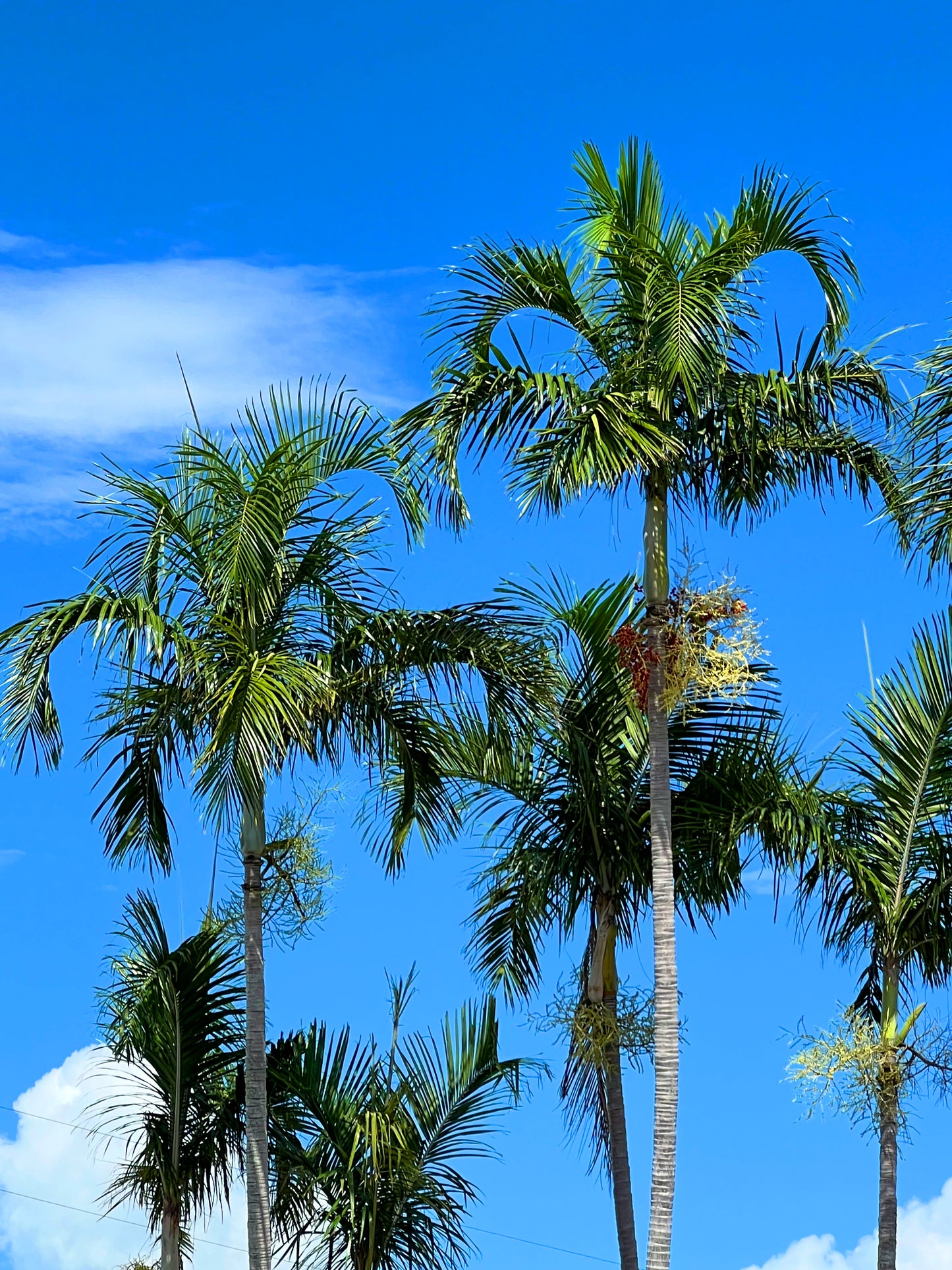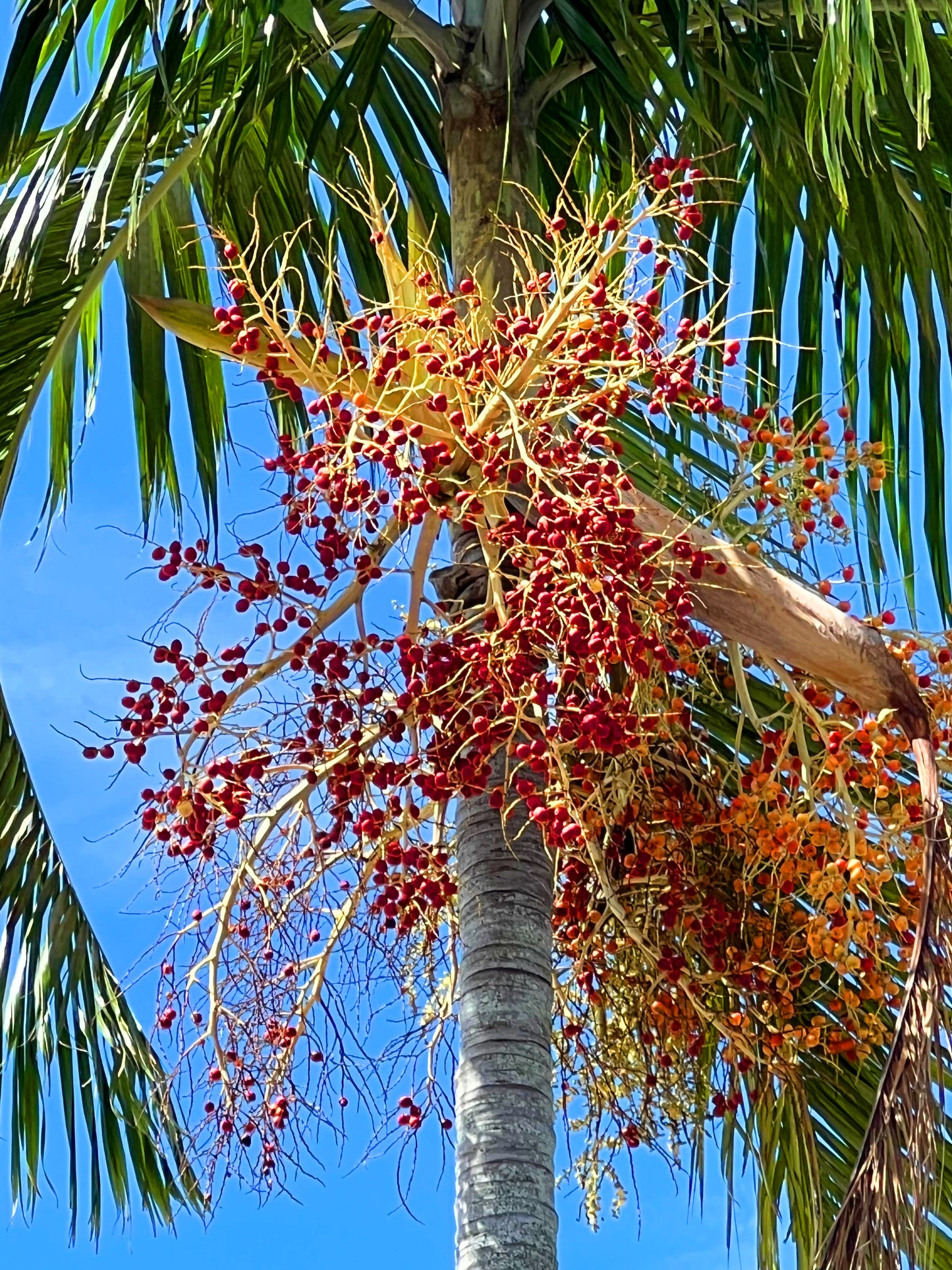Floridaseeds
Carpentaria Palm Carpentaria acuminata 10 Seeds
Carpentaria Palm Carpentaria acuminata 10 Seeds
Couldn't load pickup availability
Carpentaria acuminata is a species of palm tree native to the tropical rainforests of northern Australia. It is commonly known as the Carpentaria Palm. This palm species is well-known for its striking appearance, with large, fan-shaped leaves that can reach up to 2 meters (6.6 feet) in length. The fronds are divided into numerous segments and are typically green, although they can sometimes have a bluish tint.
Here are some key characteristics of Carpentaria acuminata:
Leaves: The leaves are the most distinctive feature of this palm. They are fan-shaped and pinnate, meaning the leaflets are arranged like the fingers of a hand. The leaflets are typically dark green and have a glossy appearance.
Trunk: The trunk of the Carpentaria Palm is slender, gray to light brown in color, and smooth. It can reach a height of up to 15 meters (50 feet).
Flowers: This palm produces small, creamy-white to pale yellow flowers that are clustered in large inflorescences. The flowers are often fragrant.
Fruit: The fruit of Carpentaria acuminata is small, oval, and red when ripe. It contains a single seed.
Habitat: Carpentaria Palms are found in the wet tropical rainforests of northern Australia, primarily in Queensland. They are often near riverbanks or in lowland areas where they can access ample moisture.
Cultivation: The Carpentaria Palm is a popular ornamental plant in tropical and subtropical regions. It is often used in landscaping due to its attractive appearance. It can be grown in well-draining soil and requires regular watering to thrive.
Conservation: While not currently listed as endangered, habitat destruction and overcollection can pose threats to the natural populations of Carpentaria acuminata. Conservation efforts and sustainable cultivation practices are important to ensure the survival of this species in the wild.
This palm species is valued for its aesthetic qualities and is often used in gardens, parks, and urban landscapes in suitable climates. It's important to note that when cultivating or transplanting Carpentaria acuminata, care should be taken to ensure it has the right conditions, including sufficient moisture and protection from extreme cold temperatures.
Growing Instructions
Seed Preparation: Soak the seeds in warm water for 24 to 48 hours. This helps soften the seed coat and may improve germination rates.
Growing Medium: You'll need a well-draining, fertile potting mix. You can use a mix of potting soil, perlite, and sand.
Containers: Choose seedling pots or trays with good drainage. The size of the container should be large enough to accommodate the seeds and allow for root growth.
Warm, Humid Environment: Carpentaria Palm seeds require a warm and humid environment to germinate successfully. You may need a propagation chamber or a warm, humid location.
Steps to Grow Carpentaria Palm from Seeds:
Prepare the Potting Mix: Fill your seedling pots or trays with the prepared potting mix.
Plant the Seeds: Plant the soaked seeds about 1 to 1.5 inches deep in the potting mix. Plant them vertically with the pointed end facing downward. You can plant one seed per pot or multiple seeds if you plan to thin them later.
Watering: Keep the potting mix consistently moist but not waterlogged. Use a spray bottle to mist the surface regularly to maintain humidity.
Covering: Place a clear plastic lid or plastic wrap over the pots or trays to create a mini greenhouse effect. This helps maintain high humidity around the seeds.
Temperature: Maintain a warm and stable temperature for germination. The ideal range is around 75-85°F (24-29°C). A propagation heat mat can help with temperature control.
Germination: Germination can take several weeks to a few months, so be patient. Once you see seedlings emerging, remove the cover gradually to acclimate them to lower humidity.
Transplanting: When the seedlings have grown large enough (usually with a few sets of true leaves), transplant them into larger pots or directly into the garden if the climate is suitable.
Growing Conditions: Provide your Carpentaria Palms with bright, indirect sunlight and maintain consistent moisture as they continue to grow. As they mature, they can handle more sunlight.










